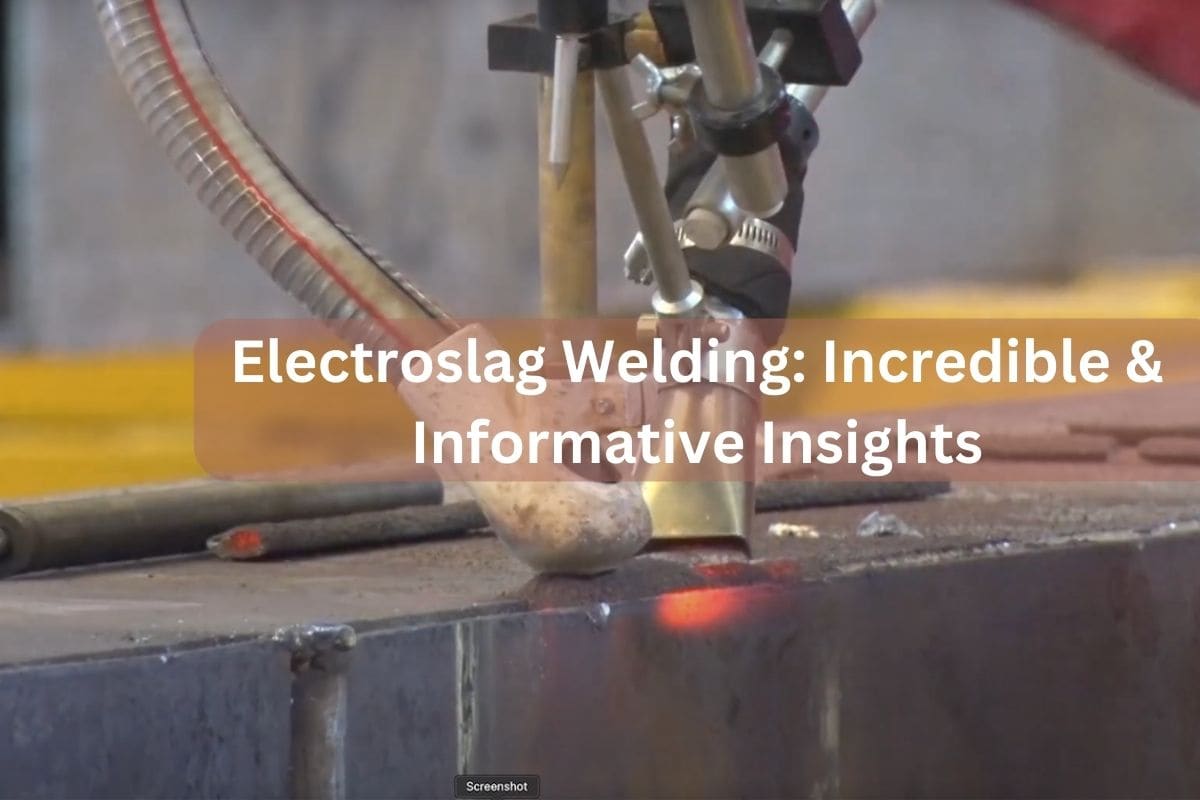Have you ever wondered how massive ships, huge storage tanks, or thick-walled pipes come together seamlessly? The answer often lies in the art and science of Electroslag Welding (ESW).
Here’s a deep dive into this fascinating welding technique, perfect for those eager to broaden their understanding.
What Exactly is Electroslag Welding?
Electroslag Welding (ESW) is a high-productivity method ideal for thick materials, ranging from 25 mm to 300 mm, typically welded in vertical positions.
It begins with an electric arc initiated by wire fed into the weld spot, followed by flux addition. Once molten slag meets the electrode tip, the arc stops.
The molten slag’s electrical resistance melts both the workpiece surfaces and the filler metal, making this a non-arc process due to the arc’s extinguishment.
The Journey of Electroslag Welding
Electroslag Welding’s journey began in the 1940s. The U.S.’s Robert K Hopkins patented it in 1940, and the Paton Institute in Kiev refined it further. By 1950, ESW made a splash at the Bruxelles Trade Fair, marking its introduction to the West.
The late 1950s saw the U.S., especially General Motors Electromotive Division in Chicago, wholeheartedly adopting it. California’s buildings benefited from ESW from the 1960s to 1980s, especially in welding stiffeners.
However, in 1977, the Federal Highway Administration (FHWA) raised concerns over its grain structure, leading to a temporary ban. But by 2000, thanks to innovations like Narrow Gap Improved Electro Slag Welding (NGI-ESW), the ban was lifted.
The Upsides of Electroslag Welding
Why has electroslag welding become so prominent? Let’s dive in:
- Cooling Woes Be Gone!: ESW’s slow cooling rate prevents cold cracking issues, ensuring the structural integrity of the weld. This is a boon for materials susceptible to such problems.
- Clean Welds: With ESW, issues like slag inclusion or porosity are a thing of the past. This results in strong and clean welds, both functionally and aesthetically.
- Speed and Efficiency: Being semi-automatic, electroslag welding is fast. Its ability to weld heavier sections in a single pass is impressive. This speed and efficiency ensure timely project completion.
- Cost-Effectiveness: ESW makes joint preparation more affordable. Combined with reduced materials handling, it offers substantial cost savings.
- Safety First: ESW minimizes common welding hazards like arc flashes. With reduced splatter and distortion, and its mechanized nature, it’s both safe and consistent.
Potential Drawbacks
Electroslag welding offers numerous benefits but comes with challenges:
- Grain Structure Concerns: ESW can produce a coarse grain structure, potentially affecting the weld’s toughness and structural integrity in certain applications.
- Positioning Limitations: ESW excels in vertical or near-vertical positions but isn’t versatile for other orientations, limiting its range of application.
- Material Thickness: While ideal for thick materials, ESW isn’t suitable for thin ones, narrowing its usage in some projects.
- Cooling Challenges: Due to ESW’s high temperatures, additional cooling might be necessary, adding to the process’s complexity.
- Initial Set-Up Costs: The starting costs for an electroslag welding station can be higher, potentially deterring those on tighter budgets.
By being aware of these challenges, welders can make informed decisions, leveraging ESW’s strengths and navigating its limitations.
Materials Used in Electroslag Welding
Electroslag welding uses specific materials for optimal results:
- Filler Metal: Central to Electroslag Welding, the filler metal melts at the joint, bridging the workpieces for a sturdy connection.
- Flux: Critical in ESW, flux converts electrical energy to heat, creating molten slag. This facilitates the melting of surfaces and the filler metal.
- Power Source: This supplies the required electrical current for the weld, calibrated for efficiency and a strong joint.
- Retaining Blocks: Keeping workpieces stable, these blocks ensure precision by preventing any unwanted movement during welding.
- Welding Head: It directs the molten slag, ensuring it covers the desired areas for a proper weld.
- Wire Feeder: This device steadily introduces the filler metal into the weld pool, maintaining process continuity.
- Wire Guide: Acting as a shield, this guide tube protects the electrode from molten slag, promoting welding efficiency.
Each material plays a distinct role in the ESW process, showcasing the intricate details that ensure a successful weld.
Read Also : What is MIG Welding? Important and Amazing Details
Where is Electroslag Welding Most Effective?
This technique shines in heavy industries, effortlessly joining plates as thick as 80 mm. Thick-walled, large-diameter pipes? ESW’s your answer. Storage tanks and chunky ship parts? Yep, ESW works wonders there too.
Wrapping Up
In essence, electroslag welding is a marvel for thick materials. From its history, benefits, and potential drawbacks to the tools that make it possible, ESW stands as a testament to human ingenuity.
If you’ve had experiences with ESW or insights to share, drop a comment below. Let’s keep the conversation flowing!


